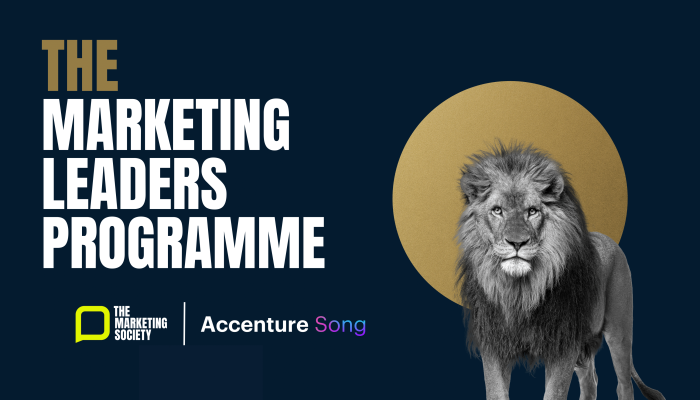SXSW. It’s often seen as the holy grail of adland conferences with two weeks full of tech, music, film, experiences and endless margaritas under the Austin sunshine. This hype meant I went ready to have my mind blown. I challenged myself to go to things I normally wouldn’t attend. I took in panels about transhumanism, learnt about speculative design, discovered the power behind secrets and discussed what makes a book a book. There’s no doubt I saw, heard and did things I’ve never experienced before and I’ve had my mind opened to new ways of thinking. Back in the UK, with the sun no longer shining, the free drinks no longer flowing and the jet lag long gone it’s easier to reflect on my first SXSW experience and if I’m totally honest, I loved it but my mind wasn’t totally blown.
I appreciate this may be controversial given SXSW’s prestige but the reason for it is simple - the dominant theme of the conference was empathy. It was everywhere, in the sessions, the tech, the conversations, successfully upstaging the usual SXSW suspects of AI and digital transformation.
There is no denying that empathy is in decline. There are countless studies highlighting how Western societies inability to see the world through other’s eyes has contributed to increased mental health issues, polarised narratives and huge levels of disconnection. Perhaps it was so dominant because as an industry we were looking for answers and even retribution. After all often advancements in tech are blamed for the divides appearing across the western world.
Don’t get me wrong, I loved the focus on empathy and even featured it in my own SXSW talk which called on creative agencies to take more responsibility for the world at large but empathy is also not new news. As Jamil Zaki pointed out in his session ‘The war for kindness: building empathy in a fractured world’, we’ve actually been facing empathetic decline since 2007 when globally we crossed over into more people living in cities than in rural areas. Empathy is also hugely emphasised where I work - Livity. We’ve spent the last 18 years arguing for its effectiveness in solving some of the biggest problems facing young people. Empathy is familiar and I guess I was expecting the unfamiliar at SXSW.
I was also struck by the slight irony of tech being positioned as the solution to the empathy problem. Sessions like Poppy Crum’s ‘Empathetic Technology and the End of the Poker Face’ explored designing tech in humanity’s best interest. It was fascinating to hear about how advancements in voice technology will soon help us predict the onset of various conditions like Schizophrenia, Diabetes and Parkinson’s disease. It was captivating to learn how tech will enhance our neural coherence, improving our ability to sense change and create personalised medicine. It was edge of your seat stuff but it also left me asking how this will actually improve our ability to empathise.
I’m no tech expert but I saw two barriers to tech being the solution to our empathetic crisis.
Firstly, empathy is the ability to share someone’s experiences. I am sure many of you, like me, wince in pain when you see someone fall off their bike. You feel that pain because you are sharing that experience. Advancements in tech mean machines are able to do this. They can track changes in our eye dilation and chemical changes in our bloodstream. They are sensing our experiences, sharing the pain, the pleasure, the reaction. But empathy also requires understanding. This stops us from transferring someone’s feelings onto ourselves as it helps us consider what is wrong and what can be done to help. Feelings are nuanced and depend on multiple factors including upbringing, relationships, lifestyle etc. I struggle to see how tech understand these experiences and in turn be truly empathetic.
Secondly, a lot of the discussions around designing more empathetic tech referenced how it can achieve a deeper level of personalisation. Everything can be tailored to you, your body and your mind. This is worrying when thinking about empathy especially within a communications context. Empathy is the ability to understand and share the feelings of another, someone with different experiences, attitudes and expectations. If everything becomes hyper-personalised and people get what they want, when they want, echo chambers and filter bubbles will grow even though it’s proven that these are part of the empathy problem, driving huge fragmentation. It lessens the need to connect with different perspectives, to see views that may challenge existing thinking or to try something new.
These two concerns risk creating problems for brands, especially those who are increasingly delivering more purposeful comms (another dominant SXSW theme). Gillette, Nike, Dominos, Lush - there’s a whole host of brands who’ve shifted their focus to be more purposeful but to successfully deliver purpose empathy is needed. It’s hard to believe this can be achieved by tech alone. There needs to be some real, human contact. In Jamil Zaki’s Q&A he referenced the importance of interpersonal contact as one of the most effective ways to reduce prejudice between people. The physical, human experience counts when it comes to bridging divides.
This sits at the heart of Livity where we take inspiration from the likes of Daryl Davis and the US based Radical Brownies to unite young people, clients and those with diverse experiences, attitudes and behaviours in order to unlock empathetic thinking and in turn, create effective communications. We look to find ways we can truly understand not only what other people think and feel but why they do even when it is completely alien and across all our work we emphasise the importance of getting different people together to hear directly from each other and importantly, interact physically. We challenge people to embrace the different, to respect it and to spend the time truly understanding it. Only through this can you challenge people’s unconscious echo chambers and their implicit biases and start to close the divides.
I’m not ruling out tech as a solution by any means. I think the possibilities being created are amazing and in so many ways incredibly beneficial in helping people understand more about the world they live in, the people around them as well as themselves. I just think that tech alone is not enough. True empathy requires real, human and physical interactions and crucially understanding. Imagine the possibilities if the two - tech and human interaction - were combined - then things could start to get really interesting.
By Emily Goldhill, Strategic Lead at Livity



